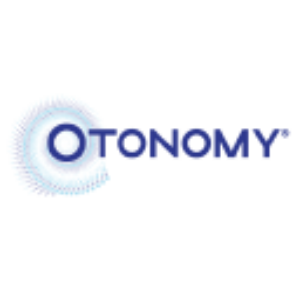Otonomy Reports Corporate and Product Pipeline Update
Rhea-AI Summary
Otonomy, Inc. (Nasdaq: OTIC) announced significant updates on its product pipeline and financial outlook. The company is preparing to report results for OTO-413 in hearing loss and OTO-313 in tinnitus in 2022. Otonomy has approximately $77 million in cash, expected to sustain operations into the second half of 2023. Key milestones include Phase 2 trial results for OTO-313 and OTO-413, and the initiation of a Phase 3 program for OTO-313 in 2023. The company aims to address treatment gaps for tinnitus and hearing loss, emphasizing its commitment to innovation in neurotology.
Positive
- Cash position of approximately $77 million supports operations into the second half of 2023.
- Upcoming Phase 2 results expected to guide future clinical trials, potentially enhancing product development.
Negative
- Non-GAAP operating expenses projected between $42-$44 million for 2022, indicating ongoing financial burdens.
- Decrease in cash reserves from $86.3 million in 2020 to $77 million in 2021 shows a concerning trend in funding.
News Market Reaction 1 Alert
On the day this news was published, OTIC gained 1.49%, reflecting a mild positive market reaction.
Data tracked by StockTitan Argus on the day of publication.
Multiple clinical trial readouts for OTO-313 in tinnitus and OTO-413 in hearing loss expected during 2022
Current capital funds operations into second half of 2023
SAN DIEGO, Jan. 06, 2022 (GLOBE NEWSWIRE) -- Otonomy, Inc. (Nasdaq: OTIC), a biopharmaceutical company dedicated to the development of innovative therapeutics for neurotology, today provided an update on its product pipeline and financial guidance. Consistent with previously stated timing, the company expects to report results for the Phase 2a cohort of OTO-413 in hearing loss patients early in the second quarter of 2022 and the Phase 2 trial of OTO-313 in tinnitus patients in mid-2022. The company also plans to initiate a clinical safety evaluation of higher unilateral as well as bilateral dosing of OTO-313 and, as previously announced, has initiated clinical evaluation of higher dosing of OTO-413. Results of these multiple studies are expected to inform initiation of a full dose-ranging Phase 2 trial for OTO-413 by the end of 2022 and start of the Phase 3 clinical program for OTO-313 in the first half of 2023.
The company finished 2021 with approximately
“We are excited to begin 2022, a catalyst-rich year for Otonomy because of our multiple clinical trial readouts for both OTO-313 and OTO-413, novel products that target large patient populations with high disease burden and no approved drug treatment,” said David A. Weber, Ph.D., president and CEO of Otonomy. “For OTO-313, we expect to generate robust clinical data to inform the Phase 3 program by having efficacy readouts for Months 1 and 2 as well as the extended follow-up period out to Month 4, and we will also have safety data for both a higher unilateral OTO-313 dose and bilateral dosing. Similarly, efficacy data from the OTO-413 Phase 2a cohort plus ongoing dose escalation evaluation will provide a good basis for initiating a full dose-ranging Phase 2 efficacy trial for OTO-413 later this year.”
Product Pipeline Update
- OTO-313: Phase 2 trial in tinnitus is ongoing with top-line results expected in mid-2022; initiating safety evaluation of higher and bilateral dosing. Otonomy is conducting a Phase 2 trial of OTO-313 that will enroll approximately 140 patients with persistent, unilateral tinnitus of at least moderate severity. Patients are being randomized 1:1 to a single intratympanic injection of OTO-313 (0.32 mg) or placebo. The primary endpoint is the same as reported for the successful Phase 1/2 trial: a responder analysis based on the proportion of patients who report a clinically meaningful improvement in the Tinnitus Functional Index (TFI) from baseline to Months 1 and 2 following treatment. To assess durability of the OTO-313 treatment effect, the follow-up period has been extended out to four months. Following the positive Phase 1/2 trial, Otonomy conducted additional nonclinical testing and successfully completed a Type C meeting with the U.S. Food and Drug Administration (FDA) in December supporting initiation of a 1-month safety study for bilateral and higher (0.64 mg) dosing of OTO-313. Additional efficacy results from the Phase 2 extended observation period and safety data from the bilateral and higher unilateral dose study are anticipated in the second half of 2022. Altogether, these multiple clinical data readouts for OTO-313 are expected to support an End-of-Phase 2 meeting with the FDA and inform the design of the Phase 3 clinical program planned to start in the first half of 2023.
- OTO-413: Phase 2a cohort in hearing loss is fully enrolled with top-line results expected early in the second quarter of 2022; clinical evaluation of higher dosing initiated. Otonomy has completed enrollment in the Phase 2a cohort for the highest OTO-413 dose (0.3 mg) evaluated in the initial Phase 1/2 trial cohorts. A total of 33 patients with hearing loss were randomized 2:1 to receive a single intratympanic injection of OTO-413 or placebo. Patients are being followed for three months and assessed using multiple clinically-validated speech-in-noise hearing tests. Otonomy has also initiated enrollment to evaluate safety of at least one higher dose of OTO-413 (starting with 0.75 mg). Each dose cohort will enroll approximately 12 hearing loss patients randomized 2:1 to OTO-413 or placebo and patients will be assessed as in the Phase 2a. Based on results from the Phase 2a cohort and higher-dose safety evaluation, Otonomy expects to initiate a full dose-ranging Phase 2 efficacy trial by the end of 2022.
- OTO-825: preclinical studies validate therapeutic potential of GJB2 gene therapy for congenital hearing loss with Investigational New Drug (IND) filing expected in first half of 2023. OTO-825 is an AAV-based gene therapy to restore hearing in patients with a mutation in the gap junction beta-2 (GJB2) gene, the most common cause of congenital hearing loss. Preclinical proof-of-concept results for OTO-825 demonstrate that a single administration of OTO-825 rescues hearing loss and cochlear damage in two preclinical models representing a range of hearing loss severity caused by GJB2 deficiency. A Pre-IND meeting has been completed with the FDA and IND-enabling activities are ongoing.
- OTO-510: preclinical development ongoing for novel and proprietary otoprotection molecule. Cisplatin is a potent chemotherapeutic agent that is widely used to treat a variety of cancers in adults and children, however, it is commonly associated with severe adverse effects including cisplatin-induced hearing loss (CIHL). Otonomy has identified a novel series of molecules with improved otoprotection in preclinical CIHL studies compared to other agents in development. The goal of the OTO-510 program is otoprotection without tumor protection.
- OTO-6XX: preclinical development ongoing for severe hearing loss program. Otonomy is evaluating therapeutic approaches to repair or regenerate cochlear hair cells that are damaged due to noise, aging or exposure to ototoxic chemicals. This mechanism is expected to be complementary to repair of cochlear synapses, which is addressed by OTO-413.
Anticipated Upcoming Milestones
- Early second quarter 2022, announce top-line results for OTO-413 Phase 2a cohort.
- In mid-2022, announce top-line results for OTO-313 Phase 2 clinical trial.
- In second half of 2022, announce top-line results for OTO-313 Phase 2 extended observation period and safety results for bilateral and higher dosing.
- In second half of 2022, announce top-line results for OTO-413 higher dose evaluation.
- By end of 2022, initiate Phase 2 dose-ranging efficacy trial for OTO-413 in hearing loss.
- In first half of 2023, initiate Phase 3 clinical program for OTO-313 in tinnitus.
- In first half of 2023, file IND for OTO-825 in hearing loss associated with GJB2 gene mutation.
Financial Updates and Guidance
- Cash Position: Cash, cash equivalents, and short-term investments totaled approximately
$77 million as of December 31, 2021, compared to$86.3 million as of December 31, 2020. - Operating Expenses: Otonomy expects that non-GAAP operating expenses for 2022 will be in the range of
$42 -$44 million , and that GAAP operating expenses will be in the range of$52 -$54 million . - Cash Runway: Otonomy expects that its current cash, cash equivalents, and short-term investments will be sufficient to fund company operations into the second half of 2023.
Non-GAAP Operating Expenses
In this press release, Otonomy’s operating expenses are provided in accordance with generally accepted accounting principles (GAAP) in the United States and also on a non-GAAP basis. Non-GAAP operating expenses exclude stock-based compensation. Non-GAAP operating expenses are provided as a complement to operating expenses provided in accordance with GAAP because management believes non-GAAP operating expenses help indicate underlying trends in the company’s business, are important in comparing current results with prior period results and provide additional information regarding the company’s financial position. Management also uses non-GAAP operating expenses to establish budgets and operational goals that are communicated internally and externally and to manage the company’s business and to evaluate its performance.
About Otonomy
Otonomy is a biopharmaceutical company dedicated to the development of innovative therapeutics for neurotology. The company pioneered the application of drug delivery technology to the ear in order to develop products that achieve sustained drug exposure from a single local administration. This approach is covered by a broad patent estate and is being utilized to develop a pipeline of products addressing important unmet medical needs with a focus on hearing loss and tinnitus. For additional information please visit www.otonomy.com.
Cautionary Note Regarding Forward Looking Statements
This press release contains forward-looking statements within the meaning of the Private Securities Litigation Reform Act of 1995. Forward-looking statements generally relate to future events or the future financial or operating performance of Otonomy. Forward-looking statements in this press release include, but are not limited to, statements related to the design and conduct of, activity, enrollment plans and patient populations for, and timing of initiation and results for current and planned clinical trials; Otonomy’s development plans and timelines for its product candidates and programs; the potential benefits and advantages of Otonomy’s product candidates and programs; expectations regarding preclinical programs, including the potential benefits, development activities and plans to file an IND; expectations regarding Otonomy’s ability to advance its pipeline and regarding upcoming catalysts; Otonomy’s anticipated upcoming milestones; expectations regarding operating expenses for 2022 and cash runway; and statements by Otonomy’s president and CEO. Otonomy’s expectations regarding these matters may not materialize, and actual results in future periods are subject to risks and uncertainties. Actual results may differ materially from those indicated by these forward-looking statements as a result of these risks and uncertainties, including but not limited to: delays and disruption resulting from the COVID-19 pandemic and governmental responses to the pandemic, including current and future impacts to Otonomy’s operations, the initiation and progression of, and enrollment in, its planned and current clinical trials, and patient conduct and compliance; Otonomy’s ability to accurately forecast financial results; Otonomy’s expectation that it will incur significant losses for the foreseeable future; Otonomy’s ability to obtain additional financing; Otonomy’s dependence on the regulatory success and advancement of its product candidates; the uncertainties inherent in the clinical drug development process, including, without limitation, Otonomy’s ability to adequately demonstrate the safety and efficacy of its product candidates, the nonclinical and clinical results for its product candidates, which may not support further development, and challenges related to patient enrollment, conduct and compliance in clinical trials; the integrity of patient-reported outcomes in its current and future clinical trials; the risks of the occurrence of any event, change or other circumstance that could impact the performance under or give rise to the termination of any promotional, collaboration or license agreements, or that could impact Otonomy’s ability to repay or comply with the terms of the loan provided by Oxford Finance LLC; side effects or adverse events associated with Otonomy’s product candidates; Otonomy’s ability to obtain regulatory approval and successfully commercialize its product candidates, if approved; competition in the biopharmaceutical industry; Otonomy’s dependence on third parties to conduct nonclinical studies and clinical trials, and for the manufacture of its product candidates; Otonomy’s ability to protect its intellectual property in the United States and throughout the world and to ensure compliance with various laws and regulations in countries in which it conducts clinical trials; expectations regarding potential therapy benefits, market size, opportunity and growth; Otonomy’s ability to manage operating expenses; implementation of Otonomy’s business model and strategic plans for its business, products and technology; general economic and market conditions; and other risks. Information regarding the foregoing and additional risks may be found in the section entitled "Risk Factors" in Otonomy’s Quarterly Report on Form 10-Q filed with the Securities and Exchange Commission (SEC) on November 10, 2021, and Otonomy’s future reports to be filed with the SEC. The forward-looking statements in this press release are based on information available to Otonomy as of the date hereof. Otonomy disclaims any obligation to update any forward-looking statements, except as required by law.
Contacts:
Media Inquiries
Spectrum Science
Chloé-Anne Ramsey
Vice President
404.865.3601
cramsey@spectrumscience.com
Investor Inquiries
Westwicke ICR
Robert H. Uhl
Managing Director
858.356.5932
robert.uhl@westwicke.com








